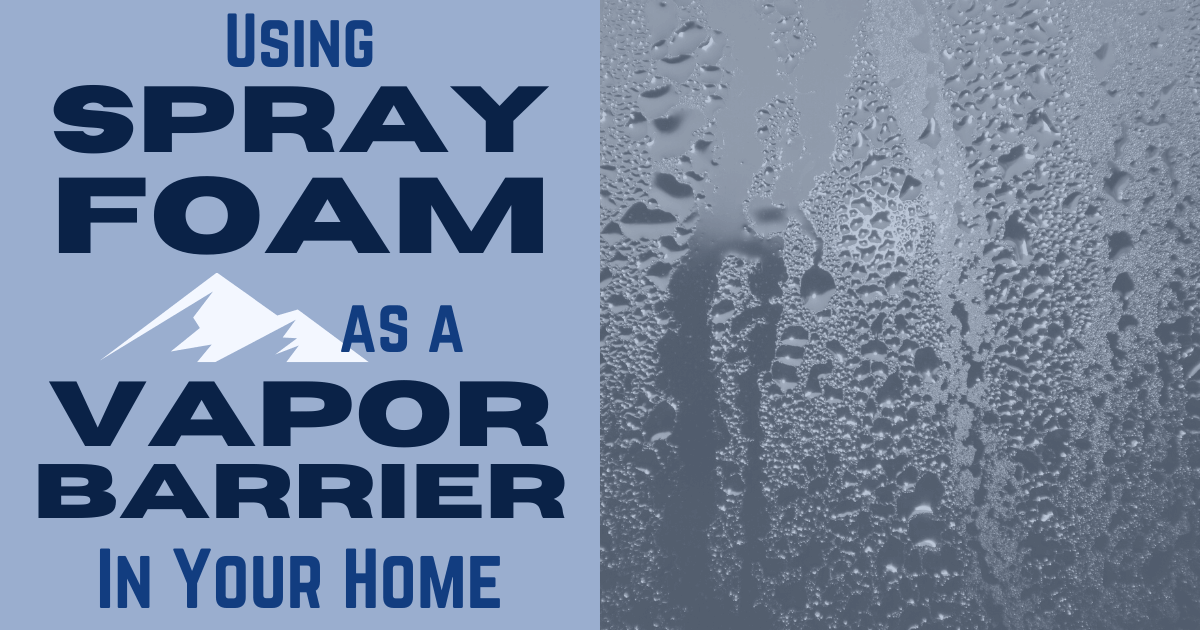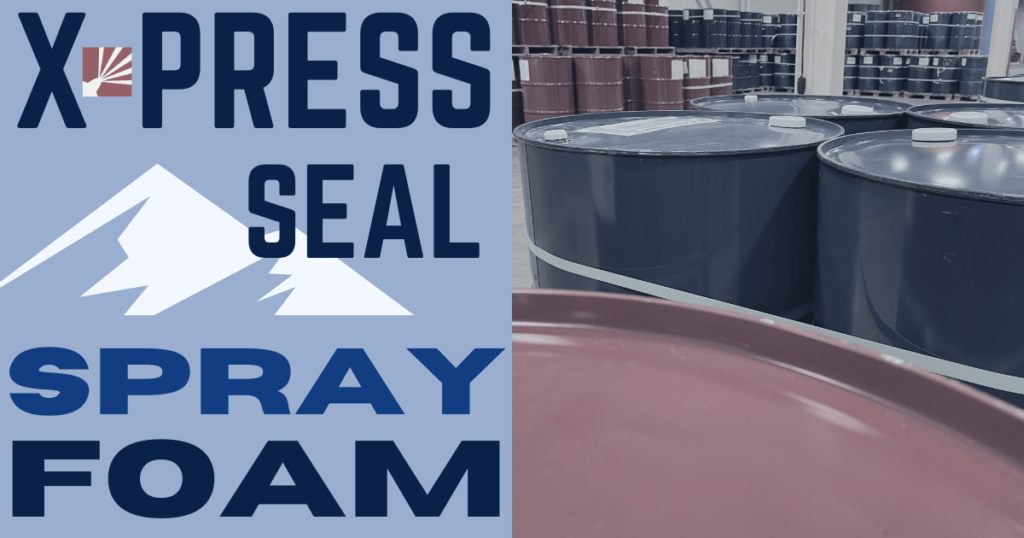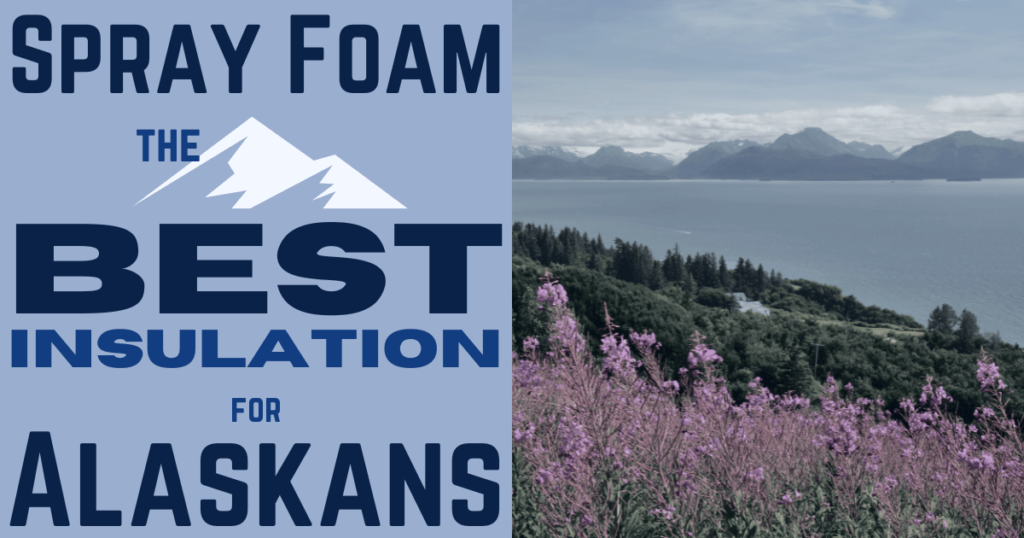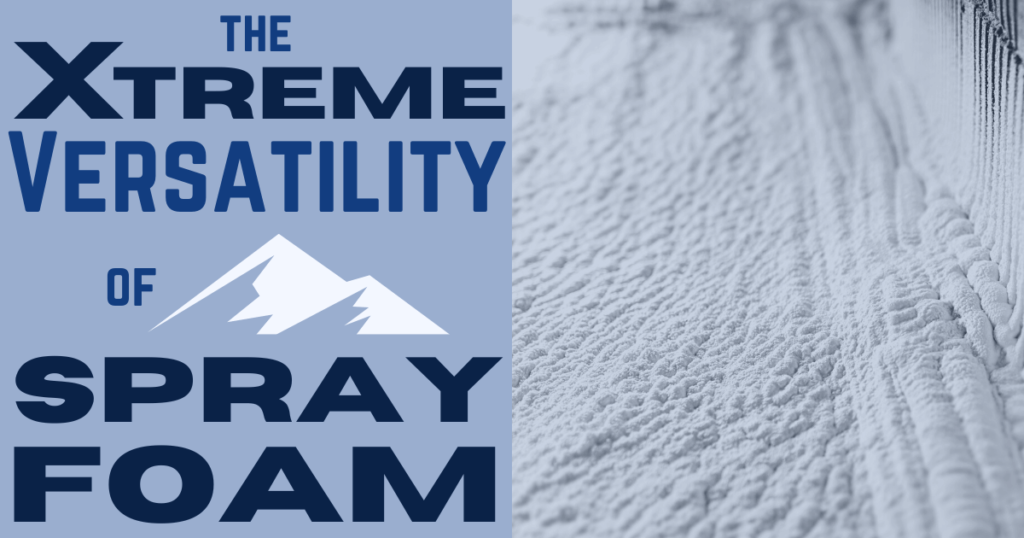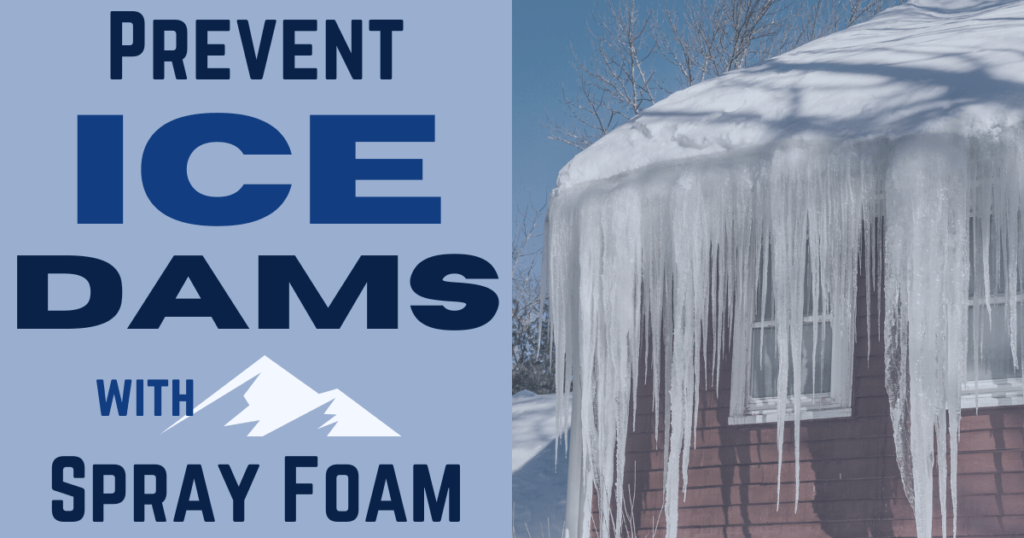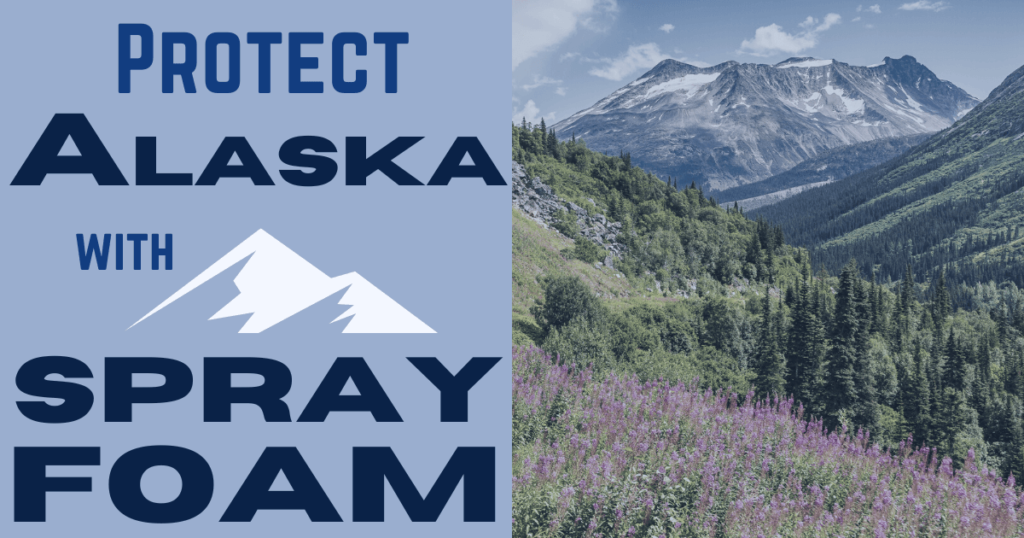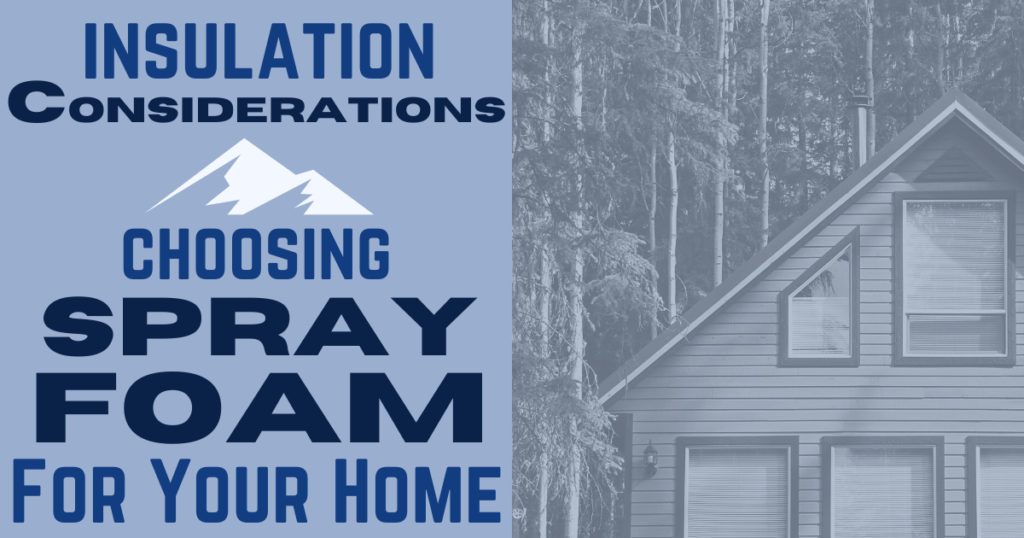Can Spray Foam Insulation Serve as a Vapor Barrier in Your Alaskan Home?
Are you considering installing spray foam insulation in your home but feeling overwhelmed by all of the building science vocabulary involved in choosing the right way to do that?
Are terms like “vapor barrier,” “vapor retarder,” and “perm number” causing you anxiety?
Never fear!
Xtreme Alaska Spray Foam is here to help!
Today, we will discuss condensation, introduce vapor retarders and barriers, and discover which type of spray foam insulation can serve as a vapor barrier in your home.
Here we go!
What is Condensation?
Before we talk about using spray foam insulation as a vapor barrier, we first need to understand condensation.
Condensation is part of the water cycle on our lovely planet. It occurs when water vapor in the air forms back into liquid water – or “condenses.”
The most widespread use of the word “condensation” refers to water droplets that form on the outside of cold beverage containers.
To prevent damage to your great-grandmother’s coffee table, you may decide to use a coaster, which acts as a barrier between the table and the condensation on a cold glass of lemonade, for instance. If you don’t use a coaster, that glass of lemonade will likely leave behind a ring of damage on the table. (Just use that coaster, man!)
The same is true for houses (and in nature), just on a larger scale. To prevent damage caused by condensation in our homes, we use vapor barriers in our walls.
As the cool glass of lemonade would suggest, condensation occurs when air reaches the “dew point,” meaning warmer air is cooled to a temperature that is too cold to hold all of its water vapor, so some of that water vapor condenses.
Cold air holds less water vapor than warm air – which is why “hot” and “humid” go hand in hand.
If there is a stark temperature contrast across a barrier – like the glass holding your lemonade, which is cold on the inside, and surrounded by warmer air – then the air just outside of the barrier will cool, and some of its water vapor will pool up on the barrier itself (in this case, on the glass).
This is where condensation in our homes comes from. We keep our houses, as a rule, warmer or colder than the air outside, so the air directly surrounding the walls sometimes produces condensation on the walls.
To keep condensation from negatively affecting the structure and safety of our homes, we install vapor barriers.
What are Vapor Barriers, and Why Are They Used?
To prevent condensation from inviting mold or mildew into our walls – which is a health hazard – we use vapor retarders (or vapor barriers).
Many materials can serve as vapor retarders in buildings, but how they are installed (with respect to insulation placement) depends on the climate in which a structure is built.
A vapor barrier – as its name suggests – serves to block (or retard) water vapor from crossing the barrier created by the walls of our houses.
Insulation material (like spray foam!) works hand-in-hand with a vapor barrier, blocking air and energy transfer through walls. Depending on the material used as insulation, vapor barriers not only help prevent walls from sweating, they also help prevent mold and mildew formation within the insulation.
Since condensation occurs across a temperature differentiation, the climate you live in plays an essential role in how a vapor barrier is installed.
If you live in a warm climate and condition the air within your home to be comfortably cool, the air outside your home will hold more water vapor than the air inside. Thus, when installing a vapor barrier in your walls, you need to put the vapor barrier in your wall on the outside of the insulation layer – toward the warm air.
This practice blocks the water vapor from condensing within your insulation, potentially causing mold or severely lowering the insulation’s R-Value.
The opposite procedure – putting the vapor barrier on the inside of the insulation layer, toward a house’s living space – is necessary for homes in cold climates.
In Alaska, we often heat our air to be comfortable in our homes. Thus, the air outside our homes is cooler than the air inside (on purpose!), and any condensation occurs on the inside of the insulation layer rather than the outside.
Basically, you want the vapor barrier placed on the warm side of the insulation to block condensation from forming within it.
If you want to learn more about the science behind using both insulation and a vapor barrier, check out this publication, prepared specifically for use in the State of Alaska.
Wondering how a vapor barrier relates to a vapor retarder? Let’s take a look!
What is the Difference Between a Vapor Barrier and a Vapor Retarder?
The terms “vapor barrier” and “vapor retarder” are often used interchangeably – but what do they mean? Are they the same?
Well, they are similar and sometimes mean the same thing…but not always.
Similar to how, technically, a square is a rectangle, but not all rectangles are squares, all vapor barriers are vapor retarders, but not all vapor retarders are vapor barriers.
Why?
Because there are different classes of vapor retarders, differentiated by permeance rating. Permeance, in this case, refers to how easily water vapor passes through a material, given a certain amount of time and a specific temperature.
The unit of measurement that is used to define a vapor retarder’s Class is called a “perm.”
If you would like a more technical definition of a perm or want to learn how to calculate the permeance rating of a given material, here’s a link to a great resource.
The takeaway for today, in case you don’t want to read the article on your own, is this:
If a material has a permeance rating of 1.0 perm, then one grain of water vapor (defined as 1/7000 pound) passed through one square foot of the measured material in one hour, while the temperature on one side of the material differed from the temperature on the other side of the material by 1” of mercury (i.e., it was warmer on one side of the measured material than on the other, like it would be on the two sides of a house’s outside wall).
Class I vapor retarders – what most people will mean when they say “vapor barriers” – have a permeance rating of 0.1 perms or less and are considered “impermeable.”
Essentially, only the best of the best vapor retarders are considered vapor barriers.
To learn more about the classes of vapor retarders, check out this publication used by the International Code Council.
Now, let’s talk about how this all relates to spray foam insulation!
Can Spray Foam Insulation Act as a Vapor Barrier?
The short answer here? Only closed-cell foam can double as an insulation and a vapor barrier.
However, both open- and closed-cell foam act as air barriers, because they both form air-tight seals in your walls. In fact, spray foam insulation is some of the most efficient air barrier material available, regardless of type!
But air is not the same as water…as you’ll know, if you’ve ever tried to inhale pool water or your morning coffee (on accident, of course!).
Let’s examine the types of spray foam insulation more closely to understand their roles in your walls.
Open-Cell Spray Foam Insulation
As you may already know from our Spray Foam Terms Explained blog post, open-cell spray foam is made up of a matrix of open, connected, air-filled cells. While this cell structure is perfect for insulating difficult-to-reach areas, open-cell foam is NOT effective as a vapor barrier.
The nature of the open cells allows for too much vapor permeation, giving open-cell foam a perm rating that is too high to be used as a vapor retardant in a structure’s walls.
That doesn’t mean open-cell foam is bad – it just means that you’ll also need to install a vapor barrier in your home when using open-cell foam for your insulation, like you would when using most other types of insulation (such as fiberglass batts or blown-in cellulose).
R-Values of open-cell foam are stellar, but only if the material isn’t wet. If it gets wet, its R-values decrease until it dries out again. Too much moisture can cause damage to the open-cell’s air-tight seal and can even cause the insulation to disconnect from your wall.
No one wants that! (So just use that coaster…uhh, vapor barrier…man!)
The huge takeaway here? If you are using open-cell foam as your insulation, make sure to install a vapor barrier, too!
If you don’t want to install a vapor barrier in addition to your insulation, we recommend using closed-cell foam instead of open-cell!
Closed-Cell Spray Foam Insulation
Closed-cell spray foam is a fantastic product!
Not only are closed-cell foam’s R-values ideal for harsh Alaskan winters, but closed-cell foam also acts as an air-tight seal and vapor barrier in a building’s walls.
That’s right – closed-cell foam CAN act as a vapor barrier, in addition to being impenetrable by air and producing R-values that are through the roof!
If you only want to install one product, which can serve as an insulation AND a vapor barrier in your home, then closed-cell foam is the insulation for you!
Conclusion
Xtreme Alaska Spray Foam is here for all your spray foam needs – including answering your insulation questions!
If you are unsure whether or not you should install a vapor barrier in your home or need help deciding which spray foam to use for your insulation project, give us a call!
We look forward to talking with you.
Keep in mind that vapor barriers are not always necessary for every insulation project.
Sometimes, you’re not insulating a house or office building!
But whether you’re filling your boat hull, insulating your chicken barn, or trying to increase the R-value of your already-insulated walls, Xtreme Alaska Spray Foam is here to help.
We can’t wait to discuss how we can help with your spray foam needs.

